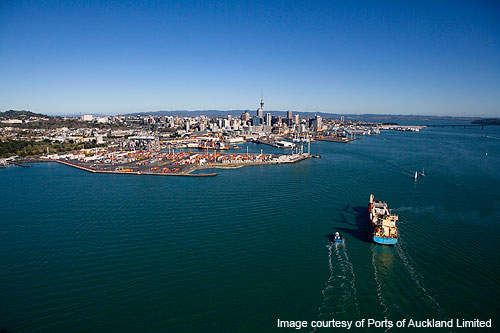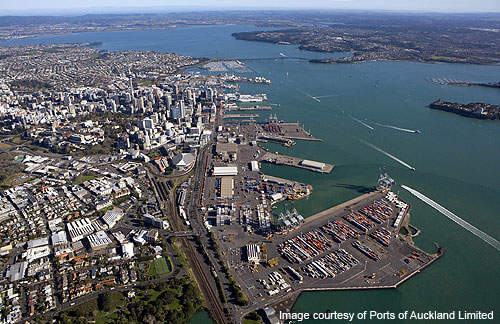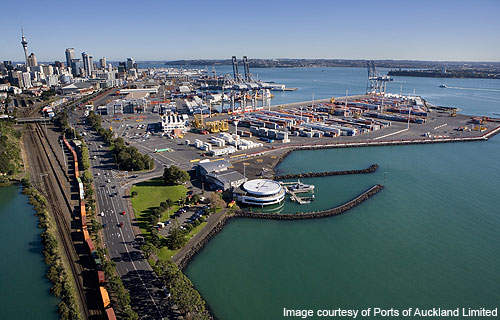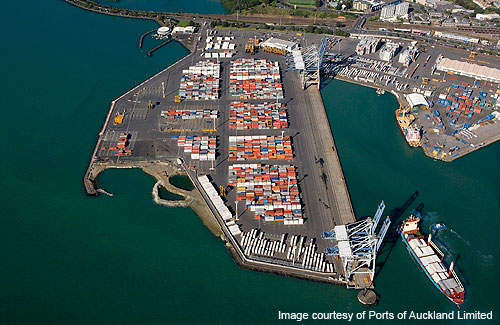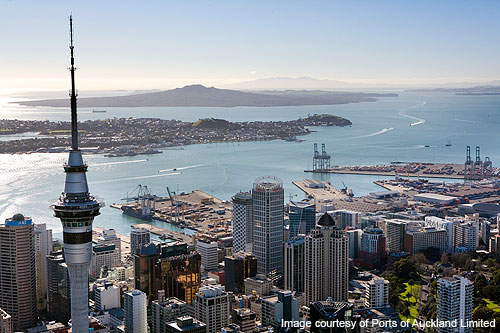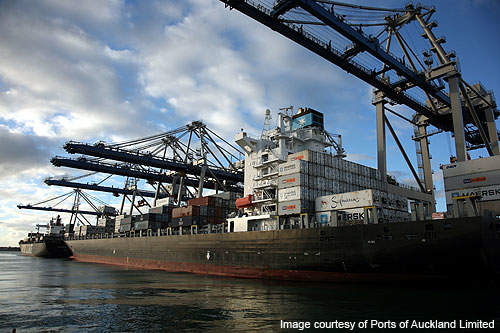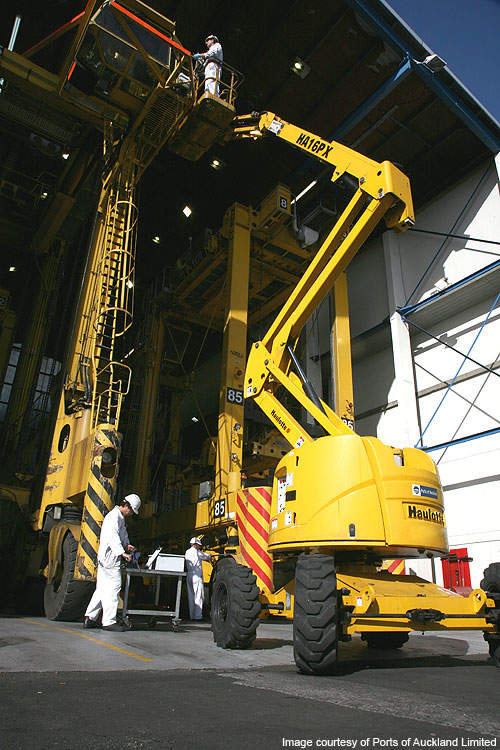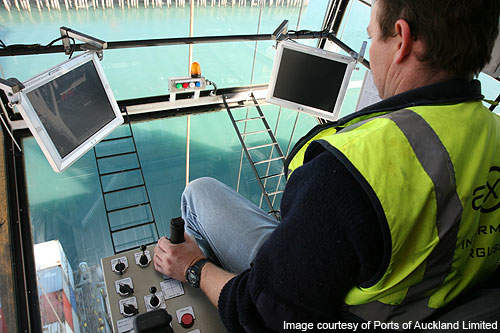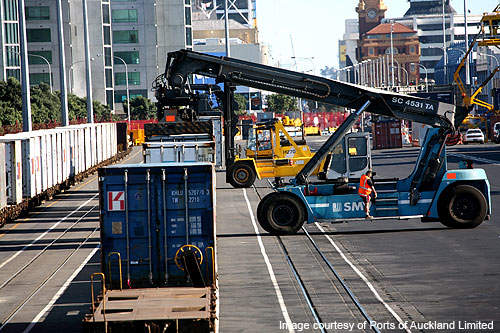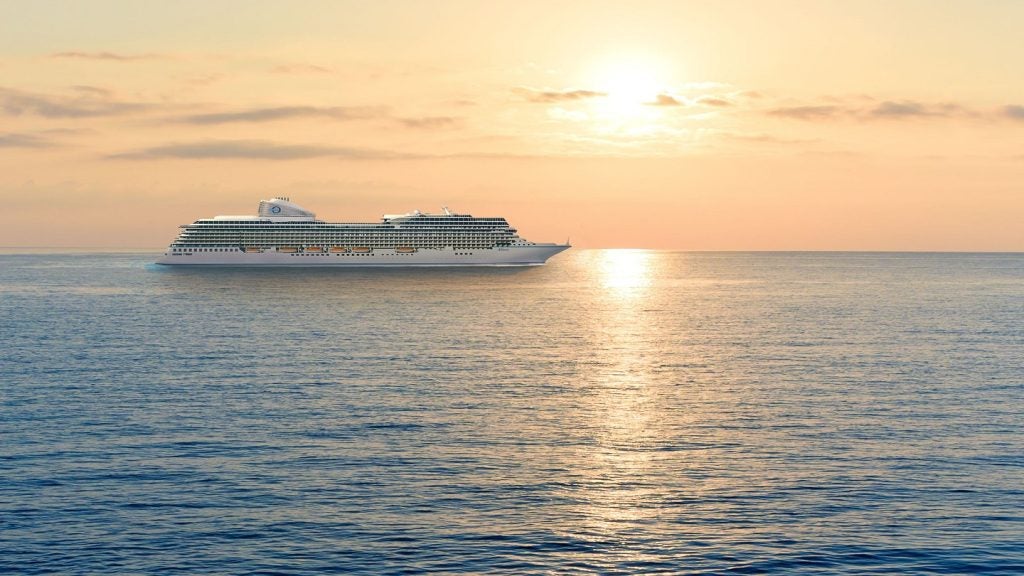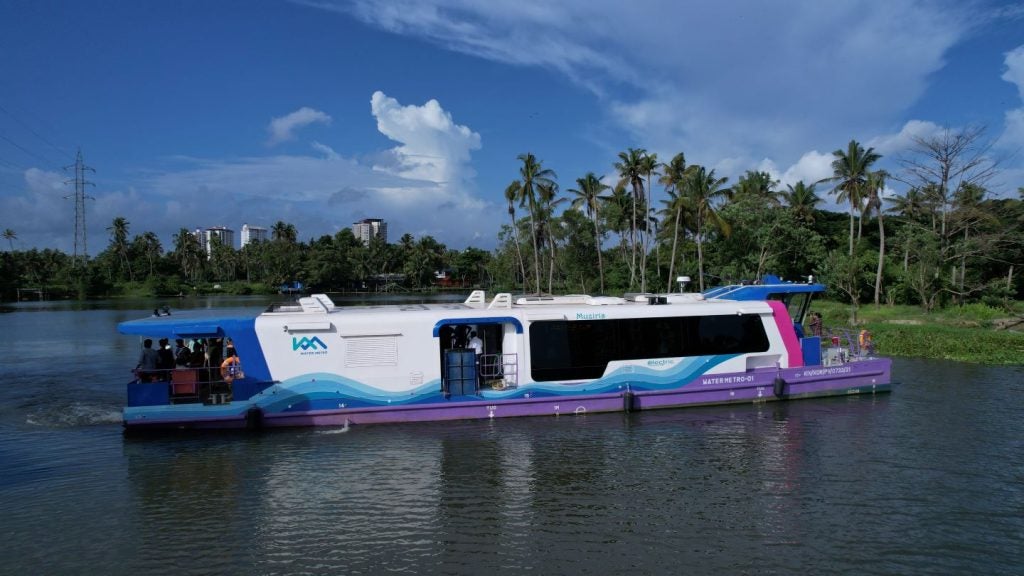The Port of Auckland is the largest container and international trade port in New Zealand.
Established in the 1840s, the port is located on an 82ha strip of land between Waitemata Harbour in the east and the Manukau Harbour in the south-west.
The port is owned and operated by the Ports of Auckland Limited (POAL), a wholly-owned subsidiary of Auckland Regional Holdings.
The port handles $27bn of trade every year and is poised for development as a major hub in the region. In 2010 the port handled 40% of the nation’s imports and 21% of exports by value, out of the total containers.
The port currently serves vessels with a maximum carrying capacity of 4,100TEUs. In December 2010, POAL announced a berth-deepening and lengthening project that will enable the port to serve vessels with capacities of up to 6,000TEUs.
This multi-million-dollar project will deepen the northern berth of the Fergusson container terminal and also construct a mooring dolphin that will increase the maximum combined length of vessels by 40m.
Construction
In 1989, POAL outlined the Port Development Plan in association with the Auckland City Council (ACC) and the then Auckland Regional Authority. This plan originally focused on developing a new port.
Over the years, however, as port productivity and efficiency improved, the focus of the plan shifted solely to redeveloping the existing eastern port area instead of constructing a new port.
Between 1989 and 2007, development of the eastern port intensified and the western section of the port was either sold or leased for alternative use.
Extension of the Fergusson container terminal together with deepening of the commercial shipping lane in the Rangitoto Channel formed a major part of the development.
Work began in 2003 and a new wider, deeper shipping lane opened in August 2007. Phase 1 of the Fergusson terminal extension, involving 5.8ha was completed by the end of 2007. Phase 2 of the extension is slated for completion by 2016. In 2008, the Port Development Plan was updated to extend to 2040.
Critical functions
The port is equipped to handle TEUs of containerised cargo, non-containerised bulk and breakbulk cargoes including steel, timber, dry and liquid bulk containers and vehicles.
It is also the region’s premier cruise port offering berthage, marine and logistics services to the Auckland cruise industry.
Port of Auckland throughput
The port handled 840,000TEUs in 2009, representing 37% of the total container trade in New Zealand.
Approximately 2.8mt of bulk and non-containerised cargo passed through the port including more than 70% of the total vehicle imports to New Zealand. The port also hosts about 70 international cruise liners every year.
Facilities
The port has two container terminals – the Fergusson Container Terminal and the Bledisloe Wharf – with three container ship berths. Each terminal operates round-the-clock, 365 days a year and is well-equipped with cargo handling and container tracking systems.
The Fergusson container terminal spreads over 32ha and has 610m of berths. The Bledisloe Wharf, located at the west of the Fergusson terminal, is 14.5ha in area and includes 260m of berths.
The port has six wharves with 3km of berths and multiple cargo handling capacities. An on-wharf packing depot at the port offers specialised services including container vanning, container de-vanning, flat racks and bases and container unpack / repack.
The port is well connected to an extensive road exchange that serves approximately 1,500 trucks daily through three port gates.
The port has its own intermodal rail exchange which includes four 650m-long parallel rail lines and has a capacity to accommodate 128 wagons at a time.
The port is connected to the Wiri Freight hub, a 15ha depot in south Auckland, via a recently completed rail exchange. This enables cargo owners to drop and pick their cargo at the depot instead of trucking it through central Auckland. The port also offers empty depots on site.
Equipment
Cargo handling equipment includes eight ship-to-shore cranes that can load and unload multiple sizes of ship from the Pacific Island and coastal operators to international vessels that can carry up to 4,100TEUs.
Five post-panamax ship-to-shore cranes operate from the Fergusson container terminal while three operate from the Bledisloe Wharf.
Each crane is twin-lift capable and is supported by a fleet of nearly 40 hybrid diesel-electric straddle carriers. Additional cargo handling equipment includes fork hoists, a reach stacker and top-lift gantry trucks. The port also has five tugs and two pilot boats.

